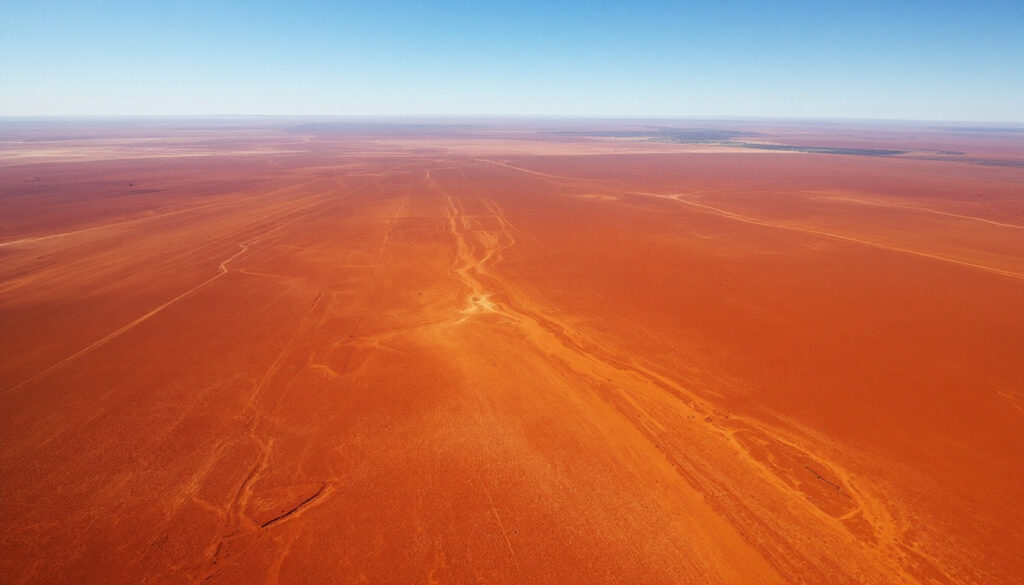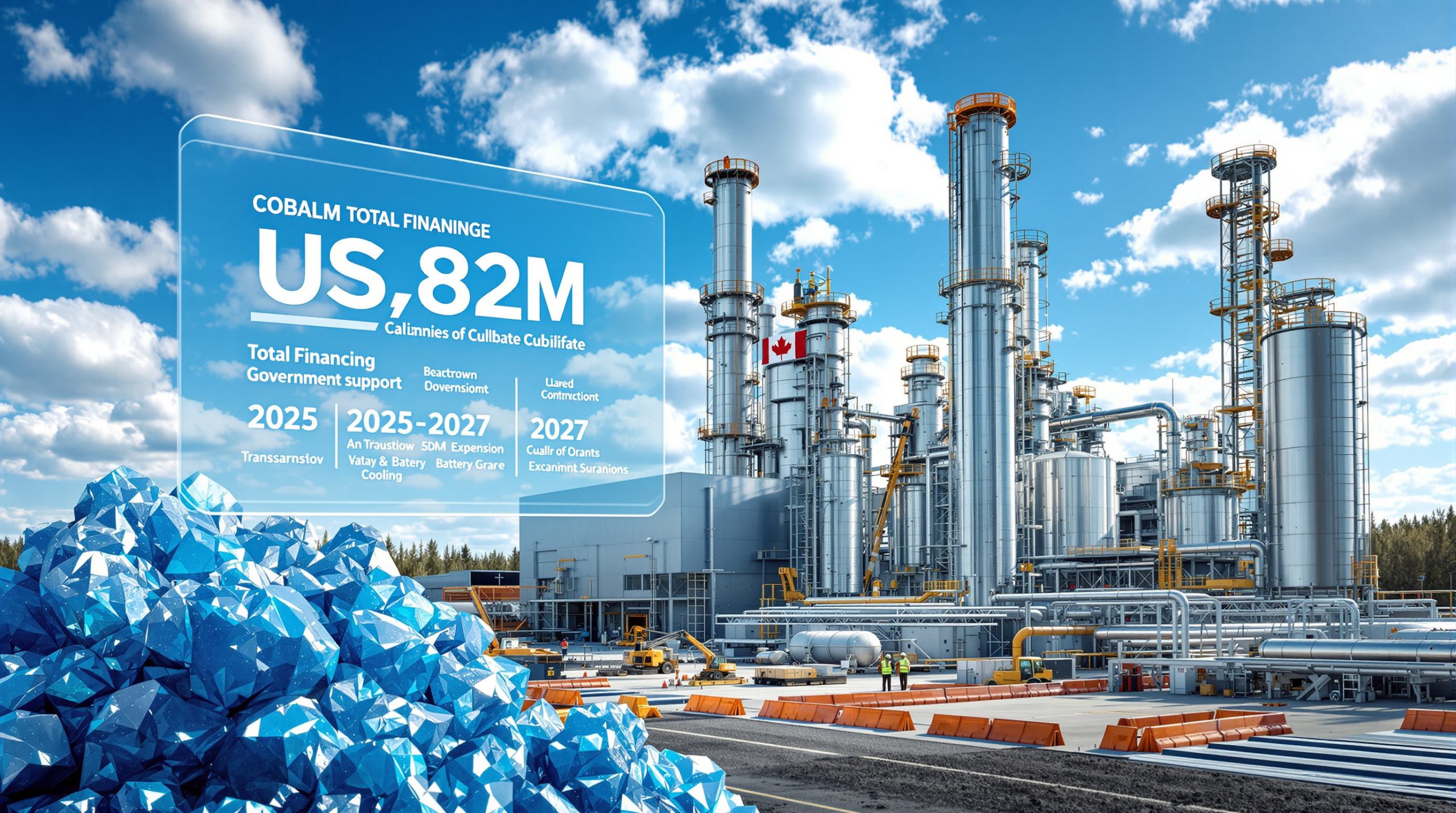What is the Ammaroo Phosphate Project?
The Ammaroo Phosphate Project represents one of the world's largest undeveloped phosphate resources, strategically positioned approximately 270km north-east of Alice Springs and 220km south-east of Tennant Creek in Australia's Northern Territory. This landmark project recently achieved a critical milestone when the Northern Territory Government granted Verdant Minerals two mineral leases, significantly advancing this strategic resource toward production. With over 1 billion tonnes of phosphate ore, Ammaroo stands as Australia's largest JORC-compliant phosphate resource, positioning it as a cornerstone of Australia's agricultural future.
"This is a significant milestone in progressing a world-class resource project that will support jobs, drive investment, and strengthen the NT's position as a leader in resource development," stated Gerard Maley, Northern Territory Acting Chief Minister, highlighting the project's importance to both regional and national economies.
The development of Ammaroo comes at a critical time, as Australia currently imports approximately 88% of its phosphate requirements for agricultural fertilizers. By establishing a domestic phosphate powerhouse, Verdant Minerals aims to reduce this import dependency while creating a more resilient agricultural supply chain for Australian farmers.
Project Location and Strategic Importance
The Ammaroo Phosphate Project's central Australian location provides strategic advantages for both domestic distribution and potential export opportunities. Situated in the Northern Territory's mineral-rich region, the project benefits from established infrastructure corridors while remaining sufficiently accessible to key agricultural markets.
Beyond its geographical advantages, Ammaroo represents a critical step toward resource sovereignty for Australia. By developing this domestic phosphate source, the country can reduce its vulnerability to international supply disruptions and price fluctuations that have historically impacted agricultural productivity and food security.
The project's advancement aligns with Australia's Critical Minerals Strategy, which identifies phosphate as an essential resource for national economic resilience and agricultural sustainability. This classification has helped accelerate regulatory approvals and attract government support throughout the development process, further demonstrating mining's role in the clean energy transition.
How Significant is the Ammaroo Phosphate Resource?
The sheer scale of the Ammaroo deposit places it among the most significant undeveloped phosphate resources globally. While Morocco dominates world phosphate reserves with approximately 70% of known deposits, Ammaroo's development represents an important diversification of global supply and a rare opportunity for Australia to establish itself as a meaningful player in phosphate production.
Resource Size and Quality
With over 1 billion tonnes of phosphate ore (P₂O₅), Ammaroo's resource size is exceptional by global standards. The deposit's JORC compliance—adhering to the Australasian Code for Reporting of Exploration Results, Mineral Resources and Ore Reserves—provides investors and stakeholders with confidence in the resource estimation methodology and classification.
The project's scale supports an expected production capacity of approximately 2 million tonnes per annum (mtpa) of phosphate concentrate, establishing Ammaroo as a significant contributor to global phosphate supply. What makes this particularly valuable is the deposit's favorable mineralogy, allowing for efficient beneficiation and processing into high-value phosphate products.
Geological assessments indicate that the deposit features relatively consistent ore grades throughout, minimizing selective mining requirements and enabling efficient large-scale operations. The phosphate mineralization at Ammaroo occurs predominantly as sedimentary phosphorite, formed through marine depositional processes millions of years ago, resulting in laterally extensive phosphate-bearing horizons.
Processing Capabilities and Output
Verdant Minerals' ambitious processing plans transform Ammaroo from a simple mining operation into a sophisticated integrated fertilizer production facility. The project will produce 500,000 tonnes per annum of merchant-grade phosphoric acid (100% P₂O₅), representing one of the largest phosphoric acid facilities in the Asia-Pacific region.
Additionally, the operation will produce 200,000 tonnes per annum of ammonia, which will be combined with the phosphoric acid to yield approximately 1 million tonnes of ammonium phosphate fertilizers. This integrated approach maximizes value addition within Australia rather than exporting raw materials for processing elsewhere.
The facility will manufacture essential agricultural products including di-ammonium phosphate (DAP) and mono-ammonium phosphate (MAP), both critical fertilizers that provide plants with readily available phosphorus and nitrogen. These fertilizers are particularly effective in Australia's predominantly phosphorus-deficient soils, making them essential for sustainable agricultural productivity.
What is the Current Development Status?
The Ammaroo Phosphate Project has achieved several crucial milestones on its path to becoming Australia's domestic phosphate powerhouse, with recent developments significantly de-risking the project for investors and stakeholders.
Recent Milestones
The granting of two mineral leases by the Northern Territory Government in April 2025 represents perhaps the most significant recent advancement for the project. This regulatory approval, following extensive environmental and technical assessments, provides Verdant Minerals with the legal foundation to proceed with mining operations once final authorizations are secured.
Critically, Native Title Holders have consented to the project, demonstrating Verdant's commitment to respectful engagement with Indigenous stakeholders. Chris Tziolis, Verdant Minerals' Managing Director, emphasized this achievement, noting: "The consent of the Native Title Holders and the subsequent grant of the mineral leases provides crucial certainty for the project financing process."
The project previously received Major Project status from the Australian Federal Government in 2020, highlighting its national significance and providing access to coordinated approval processes and additional government support. This designation recognizes Ammaroo's potential contribution to Australia's agricultural security and economic development.
Path to Production
Construction is expected to commence immediately following the securing of mining authorization, which represents the final major regulatory hurdle for the project. The certainty provided by recent approvals has enabled Verdant Minerals to advance its project financing process with increased confidence and momentum.
Final regulatory approvals are being actively pursued, with the company maintaining regular engagement with relevant authorities to address any remaining technical or environmental requirements. The regulatory pathway has been streamlined by the project's Major Project status, allowing for coordinated assessment across multiple government agencies.
The development timeline anticipates a construction period of approximately 24-30 months, with initial production targeted to begin by 2028. This schedule aligns with projected increases in domestic fertilizer demand driven by Australia's agricultural expansion plans and the global push for food security, as highlighted in recent mining and finance industry predictions for 2025.
What Economic Impact Will the Project Have?
The Ammaroo Phosphate Project represents a transformative economic opportunity for the Northern Territory and Australia more broadly, with substantial investment, employment generation, and supply chain benefits.
Investment and Development
With an estimated capital expenditure of A$700 million (US$438.2 million), Ammaroo represents one of the largest mining investments in the Northern Territory in recent years. This significant capital injection will flow through multiple sectors of the economy, from construction and manufacturing to services and logistics.
The project's minimum 25-year mine life ensures sustainable long-term economic benefits rather than a short-term boom. This extended operational timeline provides certainty for workforce planning, supplier relationships, and community development, creating a foundation for generational economic advancement in the region.
Beyond the initial development, there exists substantial potential for expansion beyond the initial production estimates. The extensive resource base could support increased production rates or extended mine life, while downstream integration opportunities could further enhance the project's economic footprint through additional processing capabilities or complementary industries.
Employment and Regional Benefits
The human capital impact of Ammaroo will be substantial, with approximately 400 jobs created during the construction phase. This initial employment surge will inject valuable skills and income into the regional economy while developing capabilities that can transfer to other sectors.
Once operational, the project will maintain around 250 permanent operational jobs, providing stable, high-quality employment opportunities in a region that has historically faced economic challenges. These positions will span various skill levels, from technical specialists and engineers to equipment operators and administrative staff.
The Northern Territory economy stands to gain significantly from this development, with direct benefits through royalties and taxes, and indirect benefits through supply chain opportunities, infrastructure improvements, and population growth. Gerard Maley, NT Acting Chief Minister, emphasized this aspect, noting the project will "strengthen the NT's position as a leader in resource development."
For Indigenous communities in the region, the project presents opportunities for economic participation through employment, contracting, and business development. Verdant Minerals has established engagement frameworks to ensure these benefits are realized in culturally appropriate and sustainable ways.
Why is the Ammaroo Project Important for Australia?
The strategic importance of the Verdant Minerals Ammaroo phosphate project in Australia extends far beyond its immediate economic impacts, addressing fundamental challenges to Australia's agricultural resilience and resource security.
Strategic Resource Security
Australia's current reliance on imported phosphate fertilizers represents a significant vulnerability in the nation's agricultural system. With approximately 88% of phosphate requirements currently imported, Australian farmers are exposed to international market volatility, supply chain disruptions, and geopolitical risks that can affect both availability and affordability of these essential inputs.
By developing Ammaroo, Australia takes a significant step toward resource self-sufficiency in a critical agricultural input. This domestic production capability strengthens the nation's food security foundation by ensuring reliable access to phosphate fertilizers regardless of international market conditions or shipping disruptions, as witnessed during recent global supply chain challenges.
The establishment of domestic phosphate processing capabilities also creates opportunities for technological innovation and product customization to address the specific soil conditions and crop requirements of Australian agriculture. This tailored approach can potentially improve fertilizer efficiency and reduce environmental impacts compared to generic imported products.
Environmental and Sustainability Considerations
Developing domestic phosphate production delivers meaningful environmental benefits through reduced transportation emissions. Analysis indicates that local production could reduce the carbon footprint associated with fertilizer supply by approximately 15-20% compared to imported alternatives, primarily by eliminating long-distance shipping requirements.
Verdant Minerals has committed to implementing modern mining practices that minimize environmental impact, including water-efficient processing technologies particularly important in the arid Central Australian context. The company's water management strategy incorporates recycling systems and monitoring protocols to ensure responsible stewardship of this precious resource.
The project embraces a sustainable approach to resource development through comprehensive mine closure planning and progressive rehabilitation strategies integrated from the design phase. This forward-thinking approach aims to minimize the long-term environmental footprint while maximizing socio-economic benefits throughout the project lifecycle, demonstrating how mining law revisions transforming industry landscapes can lead to more sustainable outcomes.
What Are the Next Steps for the Project?
With major regulatory milestones achieved, Verdant Minerals is now focused on finalizing the remaining approvals and securing the necessary financing to advance Ammaroo from development to construction and operation.
Remaining Approvals and Timeline
The final mining authorization represents the last significant regulatory hurdle before construction can commence. This authorization will address specific operational parameters including environmental management plans, water usage, and rehabilitation requirements. Based on the project's progress through previous approval stages, this final authorization is anticipated in the near term.
Upon securing this authorization, Verdant Minerals plans to immediately initiate construction activities, beginning with site preparation and infrastructure development. The construction timeline is structured to optimize seasonal conditions, with major earthworks scheduled during the dry season to minimize weather-related delays.
Project financing activities are progressing in parallel with the regulatory process, with increased certainty provided by the recent mineral lease grants enhancing investor confidence. Verdant is exploring a combination of debt, equity, and potentially government support mechanisms to assemble the required A$700 million capital package.
Future Expansion Potential
While the initial project scope represents a significant development, the enormous scale of the Ammaroo resource base presents opportunities for increased production beyond the initial 2 million tonnes per annum. Geological studies indicate potential resource expansion through additional exploration of adjacent areas and deeper phosphate horizons.
The processing infrastructure established during the initial development phase creates a foundation for potential additional processing capabilities. Future expansion could include increased phosphoric acid production, additional fertilizer products, or integration with complementary industries such as specialty agricultural chemicals.
The extensive resource base supports long-term development opportunities that extend well beyond the initial 25-year mine life. With over 1 billion tonnes of phosphate ore, Ammaroo has the potential to serve as a multi-generational asset for Australia's agricultural and economic security, potentially operating for 50+ years with appropriate resource management and market conditions, further highlighting the importance of mining investment strategies and geological insights.
FAQs About the Ammaroo Phosphate Project
What is phosphate used for?
Phosphate is primarily used in the production of fertilizers essential for agriculture. The Ammaroo project will produce ammonium phosphate fertilizers including di-ammonium phosphate and mono-ammonium phosphate, which are critical for improving crop yields and food production. Phosphorus is one of the three primary macronutrients required by plants (along with nitrogen and potassium), playing vital roles in energy transfer, photosynthesis, and root development. Without adequate phosphorus, plants exhibit stunted growth, poor flowering, and reduced crop yields.
How does this project compare to other global phosphate resources?
The Ammaroo project is considered one of the world's largest undeveloped phosphate resources with over 1 billion tonnes of phosphate ore, positioning it as a globally significant deposit. While Morocco dominates global phosphate reserves with approximately 70% of known resources, Ammaroo represents an important diversification of supply, particularly significant for the Asia-Pacific region. The deposit's scale, grade consistency, and favorable mineralogy compare favorably with other major phosphate developments, supporting its commercial viability despite being relatively distant from coastal export facilities.
What impact will this project have on Australia's agricultural sector?
By providing a domestic source of phosphate fertilizers, the project will help secure Australia's agricultural supply chain, potentially reducing costs for farmers and improving the resilience of Australia's food production systems. Australian agriculture currently relies heavily on imported phosphate, exposing farmers to international price volatility and supply disruptions. Domestic production can potentially stabilize prices and ensure consistent availability, particularly important as global phosphate demand increases with population growth and food security pressures. Additionally, locally produced fertilizers can be formulated to address the specific soil conditions and crop requirements of Australian agriculture, potentially improving efficiency and environmental outcomes.
What regulatory approvals has the project received?
The project has received Major Project status from the Federal government, secured Native Title Holder consent, and most recently obtained two mineral leases from the Northern Territory Government. It is now in the final stages of securing mining authorization. The Major Project designation, granted in 2020, streamlined the approval process across multiple jurisdictions and provided access to coordinated government support. The Native Title agreement demonstrates Verdant's commitment to respectful engagement with Indigenous stakeholders, while the mineral lease grants in April 2025 provide the legal foundation for mining operations. The final mining authorization will address specific operational parameters and is anticipated in the coming months, showing how Australia is navigating the global critical minerals race through strategic resource development.
According to Territory Q magazine, the Ammaroo project has been designed to "help feed the world" by providing essential fertilizer components that improve global food security, reinforcing its significance beyond Australia's borders.
Looking to Profit from the Next Major Mineral Discovery?
Discover significant ASX mineral announcements before the market reacts with Discovery Alert's proprietary Discovery IQ model, which transforms complex geological data into actionable investment insights. Learn why these discoveries can lead to substantial returns by exploring the dedicated discoveries page and begin your 30-day free trial to gain a market-leading advantage.




